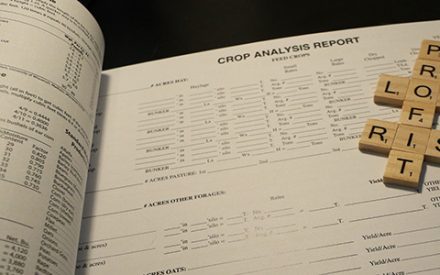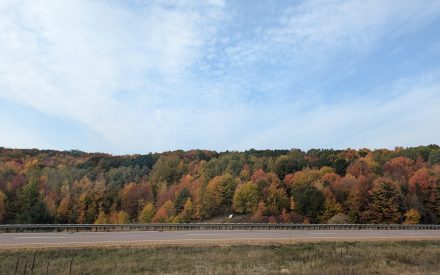Video Summary
In this Wisconsin Ag Weather Outlook for July 10, 2025, Bridgette Mason, assistant state climatologist, Wisconsin State Climatology Office, provides a comprehensive update on recent weather trends and their impact on agriculture across the state. The report reviews June’s warmer and wetter-than-average conditions, early July rainfall patterns, and current soil moisture levels.
Bridgette highlights regional differences in precipitation, with central and northern Wisconsin experiencing above-normal rainfall, while parts of the northwest and southwest remain slightly dry. The update also covers crop progress, growing degree day accumulation, and the upcoming weather forecast, including expected storms and temperature trends through mid-July.
Resources
- Wisconsin Ag Weather Outlooks
- Wisconsin State Climatology Office
- Wisconet station locations
- Wisconsin Crop Progress and Condition Report from USDA (NASS)
- Crop Conditions & Soil Moisture Analytics (NASS)
- Runoff Risk Advisory Forecast (WI-DATCP)
- NWS Milwaukee Freeze Risk Tool
Transcript
0:05
Great.
0:06
Thank you, Jerry, and good afternoon, everyone.
0:09
Just a friendly reminder that this is part of a larger effort to bring weather and climate information to Wisconsin’s AG industry.
0:16
So if you’re interested in learning more or seeing the full report, you can head to the Crops and Soils Extension website and look for the AG weather outlooks for Wisconsin.
0:27
But without further ado, let’s get into it and look at what’s been going on.
0:32
And so we’ll start with a quick review of June.
0:35
And So what we’re looking at here are what we call our official quality controlled temperature and precipitation anomalies and rankings for each climate division in Wisconsin.
0:46
And there’s nine climate divisions.
0:48
And what we see are lots of light greens and light to Reds or light pinks.
0:53
And what these tell us is that June was overall wetter and warmer than normal.
1:00
And a few things that stick out to me are that the northern tier of Wisconsin, these northern three climate divisions were some of the wetter areas.
1:08
They were over an inch wetter than normal or wetter than the 1991 to 2020 average.
1:16
And also, what sticks out to me is that some of these Southern Tier climate divisions were some of the warmer ones at over 2° warmer than normal.
1:26
Now statewide, June ranked as the 25th wettest June on record in Wisconsin and the 32nd warmest June.
1:35
And you may be surprised at the fact that June only ranked 32nd warmest given that late month heat wave.
1:42
However, much of the month prior to the heat wave was near normal in terms of temps, which kept us only 32nd warmest instead of perhaps one of the more record warmest for June.
1:55
Now turning our focus to early July.
1:58
It was rainy for the most part and rainy for most of Wisconsin with totals of 1/2 an inch to two inches across much of the state.
2:07
There were pockets of two to four inches, which are the yellows and oranges on this map, and remarkably, some of these higher totals fell in a 24 hour span, which was a bit concerning.
2:19
The State Climatology office was asking around our local National Weather Service offices such as in Green Bay in Minneapolis to see if there were any were flooding or flooding impacts or reports.
2:32
Fortunately, we haven’t heard of any in or around Door County.
2:36
However, we did hear of a washed out Road
2:39
in Washburn County again due to these really heavy rainfall events.
2:44
Now, since the last Badger Crop Connect gathering, precip totals have been quite high.
2:53
So the majority of Wisconsin saw 14 day totals of 2 1/2 inches or more, which is 130% or more of the normal for this two week time frame and even upwards of 200 to 300% of that two week normal for many in central and northern Wisconsin.
3:14
Now if you’re curious, the active pattern that we saw can be largely attributed to that persistent high pressure that was stuck off the coast of the southeastern United States, which allowed for storms to persistently track across Wisconsin.
3:28
However, not all of Wisconsin has seen an abundance of precipitation.
3:33
Douglas County and far northwestern Wisconsin, as well as South Central Wisconsin and southwestern Wisconsin saw near or slightly below normal precipitation over the last two weeks.
3:45
Now for those in the north and the West who saw an abundance of precip above normal soil moisture levels have lingered.
3:53
However, again, where precip totals are below average in the southeast and far north, you’re seeing near to slightly below normal soil moisture levels.
4:05
And because this past week wasn’t quite as active as the week prior, soil moisture levels at most of the WISCO Net research farms have declined at 48 and 20 inches, although the decline is pretty minimal for most.
4:23
And again, if you’d like to look at those numbers in depth, you can check out the full AGWOW report online.
4:30
Now fortunately, with all of the precip we have seen lately, most of the state remains drought free.
4:36
And the abnormal dryness that we see in the yellow shading in the northwest and the southwest, as well as the moderate level drought we see in the light orange shading along the southern border, we’ve seen decreases, slight decreases in the spatial coverage since last week.
4:55
So that is overall good news.
4:57
Now turning to temperatures.
4:59
The last week has been overall warm, averaging about two to six degrees above the normal for the entire state.
5:06
Temperatures have averaged oh about the mid 70s for southern Wisconsin and the southern half of Wisconsin and about the upper 60s for those in the far north.
5:17
And this persistent warmth has continued pushing growing degree days with accumulations running right on schedule to slightly ahead of schedule across the state.
5:29
Now just a very quick rundown of the crop progress report shows that most crops are running right on pace with the five year average.
5:37
We saw that corn silking has just begun.
5:39
Soybean blooming is well underway.
5:42
Winter week coloring is right on track.
5:44
We even have third cuttings of alfalfa hay that have begun in some areas.
5:49
Oats are doing well and pasture and range conditions are rated overall good to excellent, though there has been slight deterioration since last week and that was reported in the USDA NASS report that was released on Monday.
6:02
Now looking ahead, we have an active week on tap with showers and storms anticipated today through Saturday and again Tuesday and Wednesday.
6:09
And some of those hot spots are the northwestern quarter of the state as well as the southwestern counties and then lesser totals as you go east.
6:18
Now if you’d like more details on the timing and the totals, Josh and I like to encourage folks to tune into your local forecast either from the National Weather Service or your local broadcast meteorologist.
6:31
And then just for your reference, in mid-July, Wisconsin as a whole typically sees about 1 inch of rain.
6:37
Again, that’s for the 1991 to 2020 average.
6:41
Finally, looking at the 8 to 14 day outlook, it suggests we might have below normal temperatures over the mid to the end of the month.
6:49
And as a reminder, for this point in July, temperatures average around 70° statewide.
6:54
And in terms of precipitation, things are looking like they could lean near normal.
6:58
And for reference, normal is just under an inch of rain averaged across the entire state.
7:04
And with that, I will wrap it up and turn it back over to Jerry and the BCC team.
7:09
If anyone has questions, I’ll stick around and can answer them in the chat.
7:13
Thank you very much.
Badger Crop Connect
Timely Crop Updates for Wisconsin
Second and fourth Thursdays 12:30 – 1:30 p.m.
Live via Zoom

 ▶ Fall 2025 Financial Assistance for Producers
▶ Fall 2025 Financial Assistance for Producers ▶ Fall 2025 Ag Policy Update
▶ Fall 2025 Ag Policy Update ▶ Fall 2025 Corn and Soybean Market Outlook
▶ Fall 2025 Corn and Soybean Market Outlook ▶ November 6 Ag Weather Outlook for Wisconsin
▶ November 6 Ag Weather Outlook for Wisconsin


